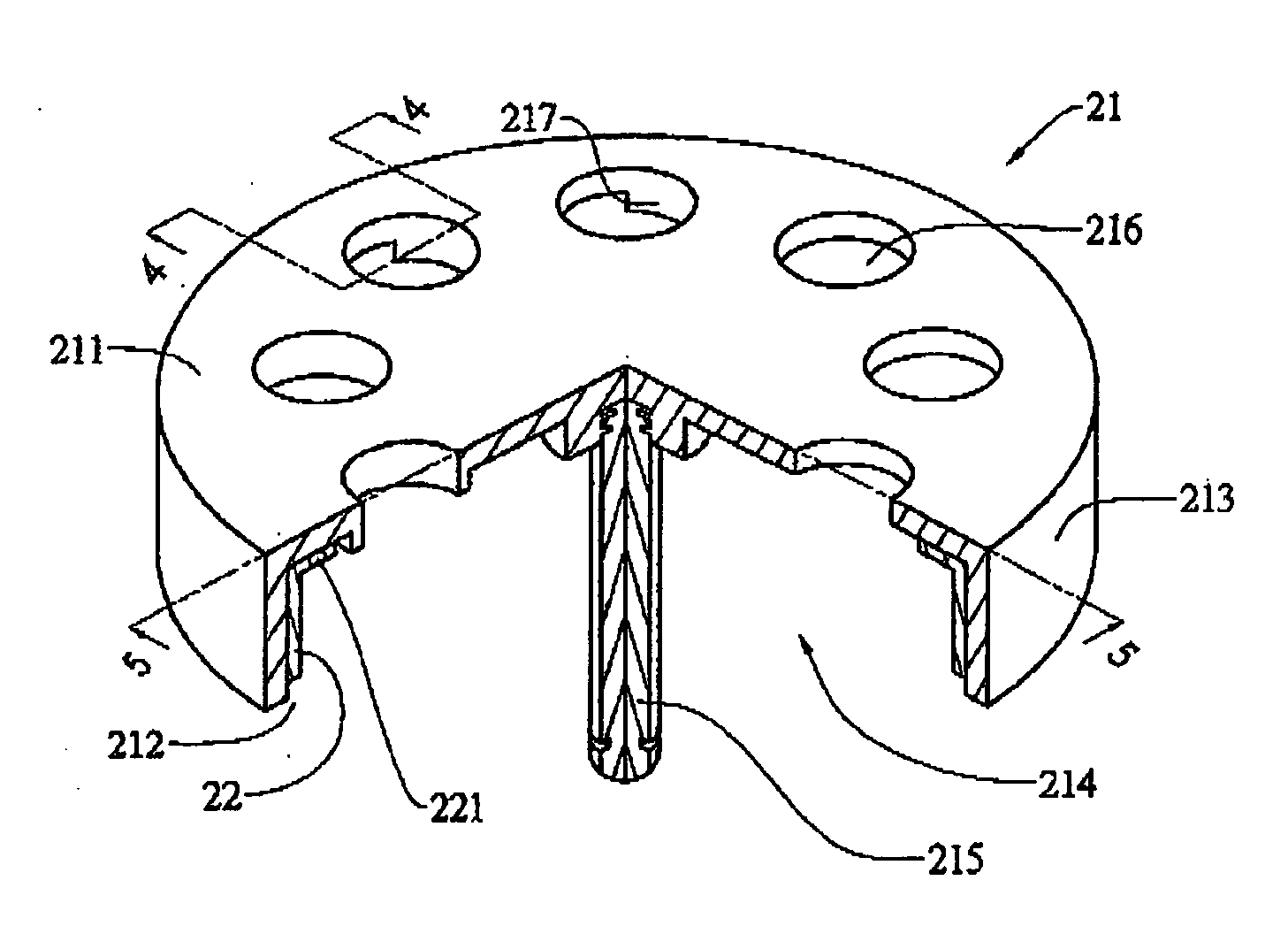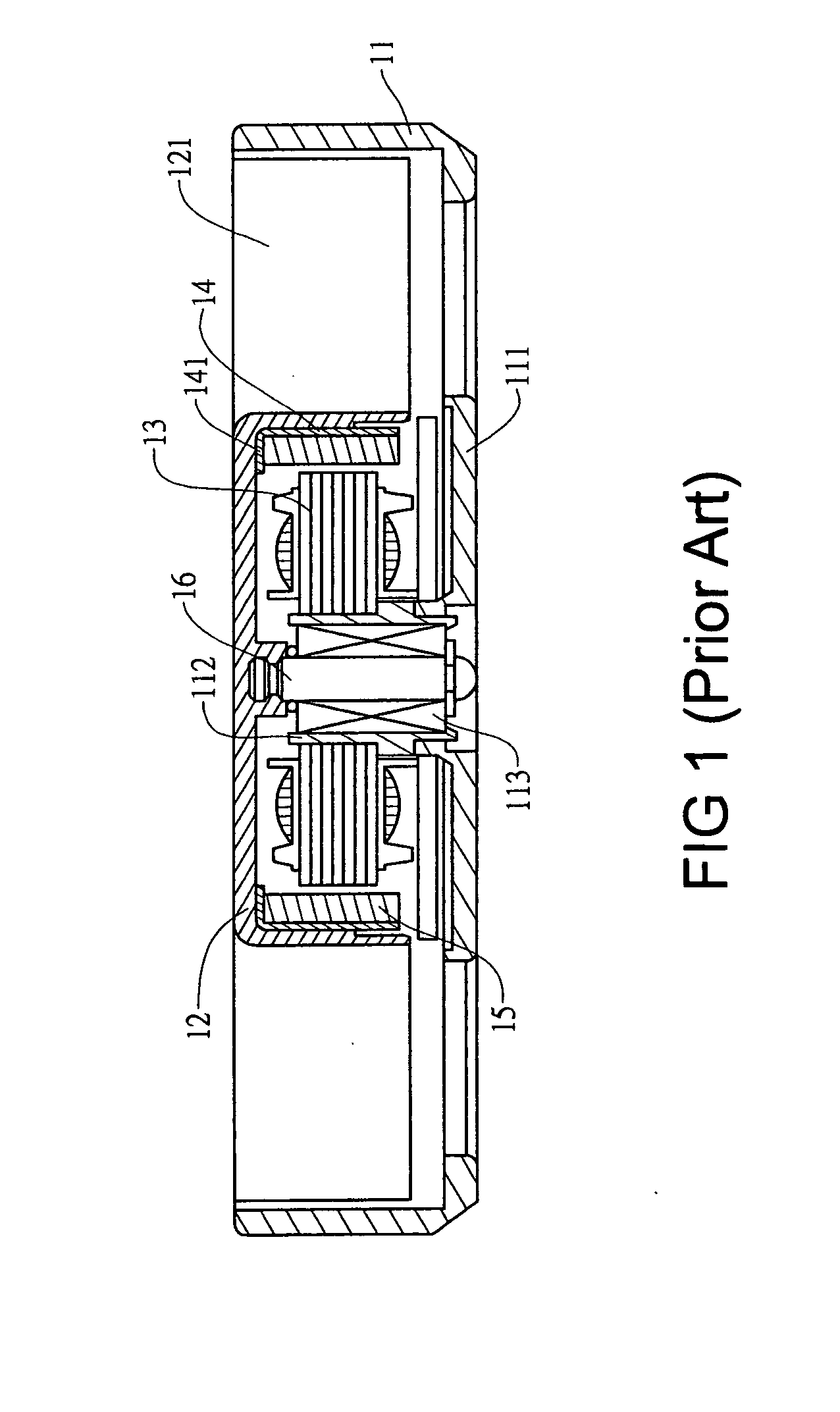Rotor device capable of forcing heat dissipation
- Summary
- Abstract
- Description
- Claims
- Application Information
AI Technical Summary
Benefits of technology
Problems solved by technology
Method used
Image
Examples
Embodiment Construction
[0044] Referring to FIGS. 2 to 6, the first embodiment of a rotor device capable of forcing heat dissipation according to the present invention is illustrated. The rotor device in the first embodiment comprises a hub 21 and an inner casing 22 disposed in the hub 21. The hub 21 has a closed end 211 and an open end 212 and a circumferential wall 213 is disposed between and connected to the two ends 211, 212 with a semi-closed receiving room 214 being formed. A shaft 215 is joined to the center of the hub 21. The closed end 211 has at least a radial through hole 216 with at least a projection extending inward from the inner surface of the closed end 211 along the circumference of the through hole 216 as shown in FIGS. 4, 5 and 6. The inner casing 22 is attached to the inner side of the circumferential wall 213 with a lip 221 thereof closely contacting with the closed end 211. Further, the inner casing 22 and the hub 21 are bonded with adhesives.
[0045] Referring to FIGS. 2, 7, 8, 9 and...
PUM
 Login to View More
Login to View More Abstract
Description
Claims
Application Information
 Login to View More
Login to View More - R&D
- Intellectual Property
- Life Sciences
- Materials
- Tech Scout
- Unparalleled Data Quality
- Higher Quality Content
- 60% Fewer Hallucinations
Browse by: Latest US Patents, China's latest patents, Technical Efficacy Thesaurus, Application Domain, Technology Topic, Popular Technical Reports.
© 2025 PatSnap. All rights reserved.Legal|Privacy policy|Modern Slavery Act Transparency Statement|Sitemap|About US| Contact US: help@patsnap.com



